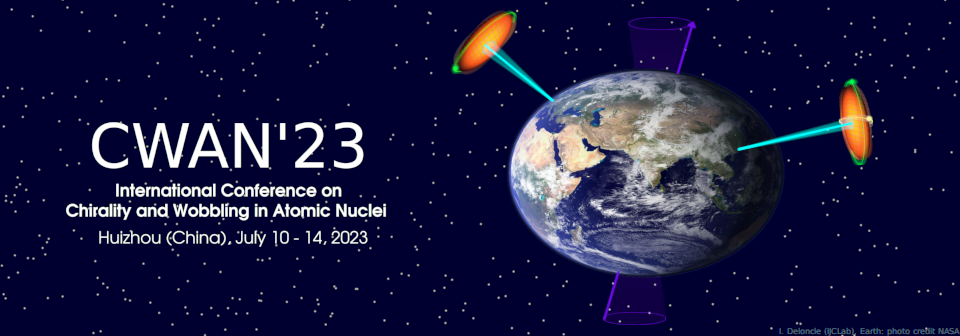Présidents de session
Session: 5
- Elena Lawrie (iThemba LABS)
Session: 6
- Xiao-Tao He (Nanjing University of Aeronautics and Astronautics)
The nucleus is a strongly correlated quantum many-body system. The large number of nucleons and the complex interaction between nucleons make the nucleus exhibit rich deformation characteristics, such as spherical, quadrupole deformation, octupole deformation, etc., and even shape coexistence occurs in specific regions. Nuclear shapes and related collective motions are reflected in the nuclear...
In the last decade, chiral symmetry in atomic nuclei has attracted significant attention and become one of the hot topics in current nuclear physics frontiers. This presentation provides a review of experimental studies on nuclear chirality in Shandong University. These studies found a new chiral mass region (A~80), tested the chiral geometry of $^{80}$Br and $^{76}$Br by lifetime...
Chirality and wobbling are two direct evidences of triaxial deformed nuclei. Following with the experimental explorations of chirality and wobbling in 80 mass region in Shandong University, we studied the corresponding issues on the theoretical side. The nuclear deformation in 80 mass region has been investigated using covariant density functional theory, and the candidates of chiral nuclei in...
A comprehensive investigation of γ-deformation observed in atomic nuclei is performed for more than 30 nuclei in different regions of the periodic chart using the microscopic triaxial projected shell model approach. It is demonstrated that apart from signature splitting of the observed g-bands, the quadrupole transitions of these bands are also sensitive to the nature of the γ-deformation....
Different kinds of shape deformations may simultaneously manifest in certain regions of the nuclear chart entailing corresponding collective modes and specific structure of excitation spectra. In particular, in the mass region of Barium, Cerium, Neodymium and Samarium isotopes one may observe different degrees of manifestation of pear-shape quadrupole-octupole (reflection-asymmetric) modes,...
Nuclear shape transitions from spherical to deformed, which accompany variation of nucleon numbers around the doubly-magic shell closures, are often manifested by octupole shapes, $\alpha_{3,\mu} \neq 0$, at vanishing quadrupole deformations and not -- as often thought -- exclusively by the prolate/oblate quadrupole shapes. Corresponding exotic nuclear geometry is described by the...

